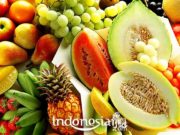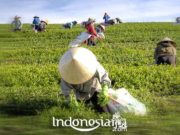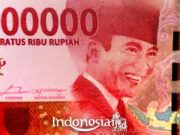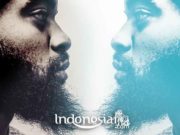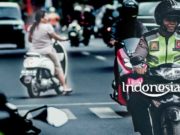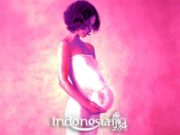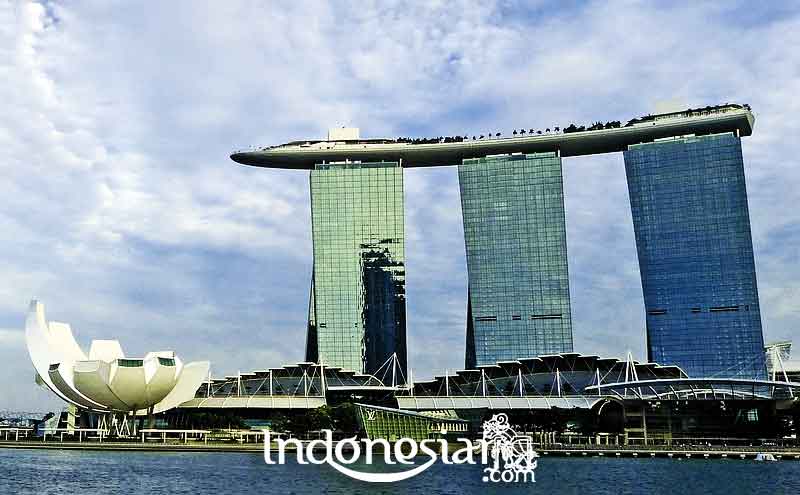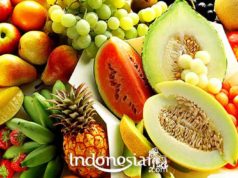Apart from Pontianak, a city in the province of West Kalimantan which has a well-known name is the city of Singkawang. Previously, Singkawang was a village that was included in the territory of the Sambas sultanate, Singkawang Village as a stopover for traders and gold miners from Monterado.
The miners and traders who mostly came from China, before they went to Monterado first rested in Singkawang.
Meanwhile, the gold miners in Monterado, who have often been resting in Singkawang to relieve fatigue, and Singkawang are also a transit point for the transportation of gold mining products (gold powder).
At that time, they (the Chinese) called Singkawang with the word San Keuw Jong (Hakka language), they assumed from a geographical point of view that Singkawang is directly adjacent to the Natuna Sea and there are mountains and rivers, where the water flows from the mountains through the river to the mouth of the sea. .
Seeing the development of Singkawang which was considered by them to be quite promising, so that among the miners they switched professions, there were farmers and traders in Singkawang, which in the end the miners lived and settled in Singkawang.
The city of Singkawang was originally a part and capital of the Sambas Regency area (Law Number 27 of 1959) with the status of Singkawang District and in 1981 the city became the Administrative City of Singkawang (PP Number 49 of 1981).
The purpose of the establishment of the Administrative City of Singkawang is to increase effective and efficient governance activities and is the main vehicle for regional development and is a strong driving force for efforts to increase the pace of development.
Apart from the administrative center of Singkawang City, the capital of Sambas is also located in Singkawang City.
The city of Singkawang was once proposed to become a Municipality of the Singkawang Level II Region, namely through the proposal of dividing Sambas Regency into 3 (three) autonomous regions.
However, the Municipalities of the Level II Singkawang Region were not immediately realized by the Central Government.
At that time, through Law Number 10 of 1999, only the division of the Bengkayang Regency Government from Sambas Regency was approved, so that the Singkawang City Administrative Region became part of the Bengkayang District Government, as well as establishing the Sambas Level II Regional Government with a capital in Sambas.
This condition does not make the people of Singkawang recede to fight for Singkawang to become an autonomous region, the aspirations of the community continue with the support of the Sambas Regency Government and community elements such as: KPS, GPPKS, Kekertis, Gemmas, Team Sukses, LKMD, RT and other organizations.
Going a long way through research and studies that are continuing to be carried out by the Governor of West Kalimantan and the Team for the Expansion of Sambas Regency which was formed by a Joint Decree between the Sambas Regent and the Bengkayang Regent No. 257 of 1999 and No. 1a of 1999, 28 September 1999, as well as an assessment by the CRAIS Team, the Regional Autonomy Advisory Board.
Finally, Singkawang was designated as an autonomous region based on Law Number 12 of 2001 concerning the Establishment of the City of Singkawang, and was inaugurated on October 17, 2001 in Jakarta by the Minister of Home Affairs and Regional Autonomy on behalf of the President of the Republic of Indonesia.
Demographics
Geography with an area of 504 km², Singkawang is located on the equator with coordinates between 0 ° 44’55.85 “- 1 ° 01’21.51” LS 108 ° 051’47.6 “-109 ° 010’19” BT .
Geographical
Astronomically, Singkawang City is located between 0 ֯44’55,85 “to 01 ֯0’01’21,51″ North Latitude and 108051’47.6 “sd109010’19” East Longitude. Geographically, the area of Singkawang covers 504 square kilometers. Based on the administrative location, Singkawang City has boundaries: North – Sambas Regency, South – Bengkayang Regency, West – Natuna Sea, East – Bengkayang Regency.
The city of Singkawang is a coastal city as well as hills. This is a very unique blend of topographies. Even Mount Besar, which is in the southern part of the city, directly touches the shoreline of the Natuna Sea. The mountain clusters in the South Singkawang region that stretch from Mount Poteng in the east to Mount Besar in the west give this city a beautiful and cool impression.
Some of the hills even reach deep into the city, namely Gunung Sari (305 m) and Mount Roban (212 m). Apart from the mountainous and hilly areas in the southern part, the topography of Singkawang City is generally flat, with a slope between 0 – 8%.
This area with a slope of 0-8% is located in the northern and western parts of the city in the districts of North Singkawang and West Singkawang as well as most of Central Singkawang. This low slope area is generally located at an altitude between 0-12 meters above sea level.
The micro-climate of Singkawang City is a tropical climate with cooler air than Pontianak City because of its unique physiomorphology. The city’s rainfall is quite high, namely an average of 2,780 mm per year with an average of 134 rainy days per year.
Relatively high rainfall occurs in April – July and October-December with a maximum rainfall of 490 mm in December with 20 rainy days.
The condition of the microclimate in Singkawang City can be said to be erratic with temperatures ranging from 21.8 degrees Celsius to 30.05 degrees Celsius, and is still influenced by monsoons and changes in the marine climate.
The hydrological conditions of Singkawang City are strongly influenced by the city’s topography which is very flat in the north and west and undulating to the mountains in the east and south.
Dozens of rivers that flow in the city of Singkawang all originate in a mountainous cluster in the southern part of the city.
Part of the river flows to the north and empties into the Selakau River, while others flow to the west and empties into the Natuna Sea.
The Singkawang River is one of the rivers that empties into the Natuna Sea and passes through the city center. This Singkawang River originates at Mount Roban, some of its water also comes from Mount Poteng.
In the south, the Sedau River, the Jintan River and the Red River flow directly into the Natuna Sea and generally head up in several mountainous areas such as Mount Jintan, Mount Sijangkung, Mount Pasi, Mount Besar and others.
The symbol of Singkawang City is taken from various potentials, full of meaning. The following is the meaning of the symbol of the City of Singkawang.
Meaning of Color
Red: Courage
White: Chastity
Green: Fertility
Blue: Serenity
Yellow: Nobility and Majesty
Meaning of Image
Star: The Supreme Lordship
Rice and Cotton: Welfare and Prosperity are the goals of the entire community of Singkawang City
Chains and Gears: Unity and Unity in the wheel of development
Mountain: Firmness and Firmness
Ocean: Insights and expansive views
Monument: A milestone in the struggle of the City of Singkawang
Singkawang City Ribbon: Symbolizes the identity of the City of Singkawang
Total Rice, Cotton, 2001: Symbolizes the Inauguration of the Establishment of the City of Singkawang on October 17, 2001, which was made the Anniversary of the City of Singkawang.
Book: Symbolizes Science and Technology and Laws and Regulations.
United To Advance: Motto Symbolizes the City of Singkawang.
Come on, get other interesting information from indonesiar.com.




